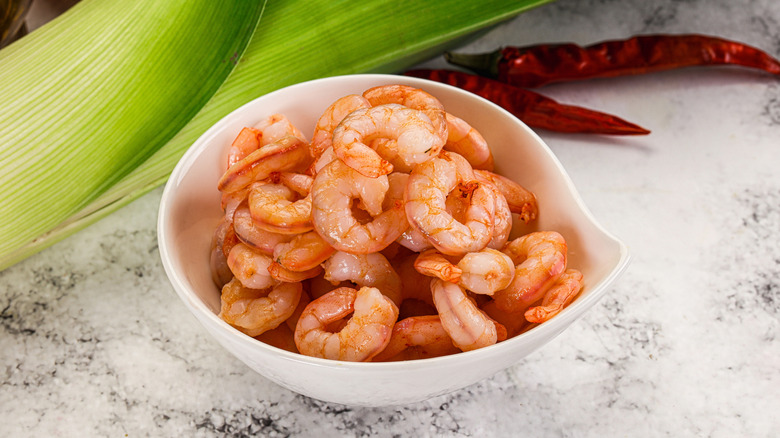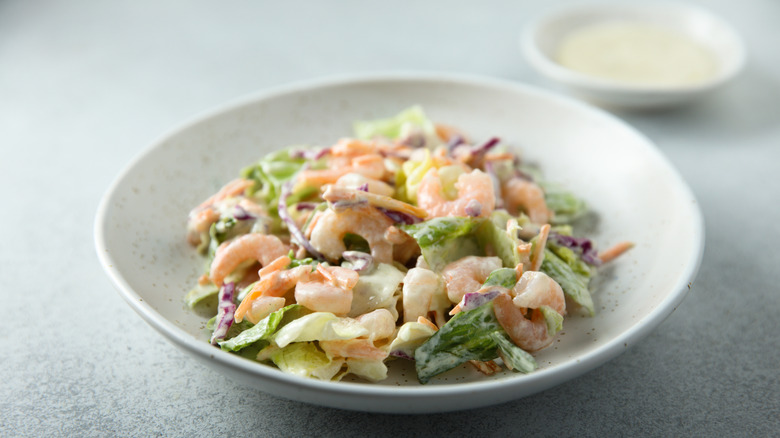For Better Canned Shrimp Don't Skip This Step
We may receive a commission on purchases made from links.
It feels like there's a newfound respect for canned foods these days. Perhaps this is due to hunkering down during the Pandemic, or as a result of stretching budgets as grocery prices have increased dramatically since 2019. Whatever the reason, everyone seems to be on board, keeping cans in the pantry so they're always on hand for dinner. One option you may have seen stacked next to the more obvious suspects like tuna and salmon is canned tiny shrimp.
While canned shrimp will never replace its fresh, succulent counterpart, the tiny, brined crustaceans come in handy for garnishing salads or making shrimp dip for the big game. However, there's an important step some people might not even know about when adding canned shrimp to coleslaw or shrimp spread: rinsing. In fact, just as it's important to rinse canned beans before using them, the benefits you'll reap from rinsing canned shrimp will improve just about any dish you add them to.
It's worth noting not every canned item needs to be rinsed. Canned tuna, for example, which is generally packed in water or oil, doesn't taste better with rinsing (though one study found rinsing tuna for three minutes reduced its sodium content by 80%). But with shrimp, you're enhancing the natural shrimpy flavors, reducing sodium, and also removing the somewhat slimy brine that coats each little bite. Of course, if you like the brine solution, by all means include it.
Why rinsing canned shrimp is important
Sometimes canned goods are as tasty as their fresh counterparts, last longer (obviously), and come ready to toss into salads and stews. Canned shrimp doesn't replace fresh shrimp in most situations. But canned versions, like Bumble Bee tiny shrimp, helps avoid two of the many mistakes made when cooking shrimp: not having any on hand, and not having the right size for salads.
As with many canned items, shrimp come packed in a salt-rich brine. While that helps with preservation, it impacts the flavor and adds a great deal of sodium. The added sodium is particularly noticeable in mildly flavored dishes that commonly use canned shrimp, like shrimp salad sandwiches, shrimp coleslaw, or a retro tomato-shrimp aspic salad. And if you're watching your sodium intake for health reasons, any opportunity to reduce the numbers is helpful.
A USDA study found that only draining green beans, peas, and other vegetables reduced added sodium a small amount, but rinsing them had a significant impact. The same holds true for canned shrimp. That can of Bumble Bee has 650 mg of sodium after draining. It will have even less when rinsed. Open the can and drain any excess liquid. Then toss the shrimp into a strainer or colander and rinse well with cool water. Your salad and your palate will thank you. Don't worry; there's still enough brine infused in each tiny shrimp for a pop of salty flavor.

